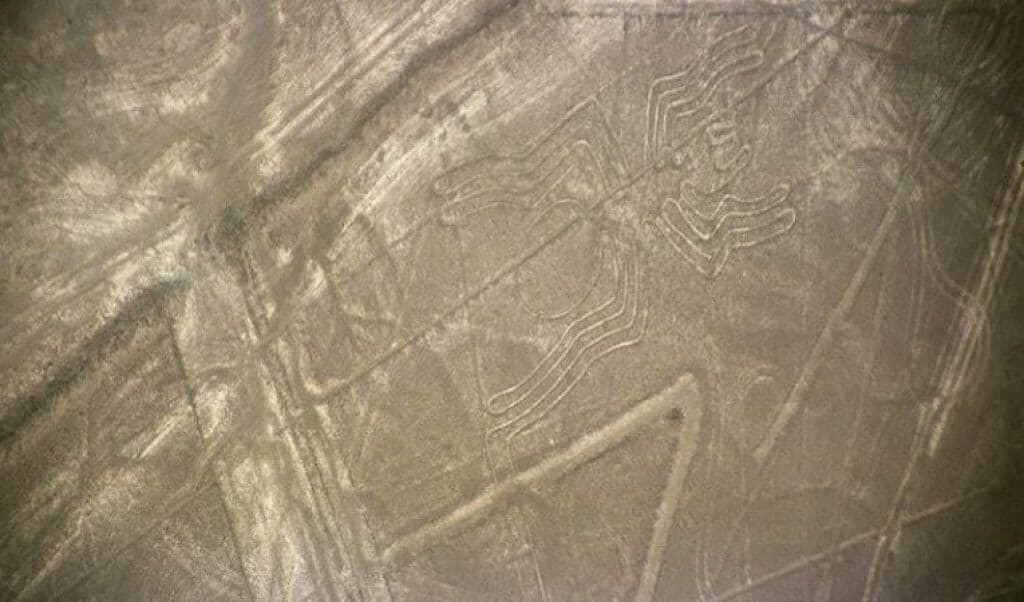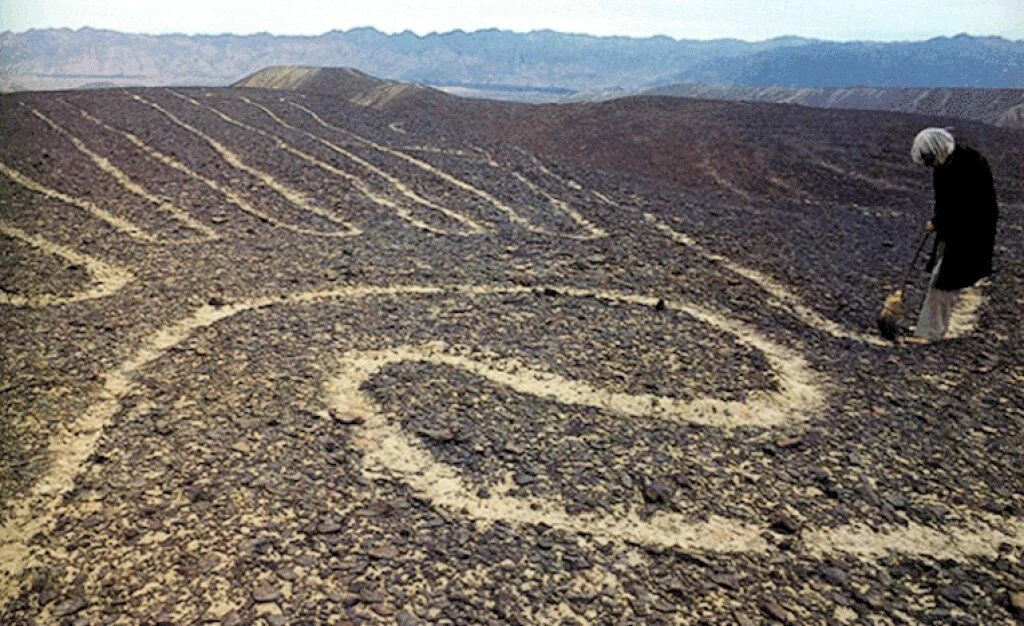The Nazca lines of Peru are a collection of geoglyphs on the Peruvian desert floor. They range in complexity from lines to geometric shapes to stylized animals, such as birds, spiders, and lizards. The glyphs are most visible from the sky, due to their size. However, many scholars believe that ancient people created them sometime between 500 BC and 500 AD, long before the development of human flight.

How Are the Nazca Lines of Peru Made?
It was revealed that these designs were simply made. It involved brushing the reddish pebbles and rocks from the desert floor, which would reveal the white colored sand underneath. Because of the lack of rainfall and dangerous winds, these drawings had remained unaltered and could very well be centuries old.

Early Studies
The first written description of the Peruvian glyphs is found in a 1553 book by the conquistador and chronicler Pedro Cieza de León (c. 1520 -1554). He believed they were trail markers. The lines did not attract much interest, however, until Toribio Mejia Xesspe, a Peruvian archaeologist, rediscovered them while hiking in 1927. Twelve years later, he described his finds at a conference in Lima.
Related: Blythe Intaglios Geoglyphs in California’s Desert
Paul Kosok, a professor of history from Long Island University, was the first scholar to conduct a serious study of the lines. During the early 1940s, while researching ancient irrigation systems, Kosok observed a large glyph of a stylized bird. After watching the sun set exactly over some of the lines, he concluded that Nazca had designed the lines to serve as a calendar that would help them determine when to plant and harvest crops.
After World War II, a German mathematician named Maria Reiche made the first formal survey of the geoglyphs. She also believed they served as a calendar. Other scholars have hypothesized that the lines were irrigation plans, works of art to be seen from hot-air balloons, Inca roads, and even landing strips for extraterrestrial spacecraft. The last hypothesis was popularized in the 1968 book “Chariots of the Gods?” by Erich Von Däniken.
Nazca-Palpa Project
Reiche also fiercely protected the geoglyphs from outsiders, and her successors have followed that policy since her death in 1998. Since 1997, however, the Nazca-Palpa Project has been conducting a multi-disciplinary study of the ancient Nazca people and their culture. That naturally includes the Nazca lines of Peru.
The ancient Nazca had lived in the coastal areas of southern Peru and northern Chile, which is one of the most arid regions on Earth. Their culture had developed in a small and protected basin fed by ten small rivers. The climate was erratic, and the rivers ran dry when the rains stopped. One river, the Nazca River, runs underground for about nine miles. It re-emerges as a spring near Cahuachi, the capitol and religious center. The Project’s members believe that the lines and geoglyphs were used in religious ceremonies and that making and maintaining them was a communal activity akin to building a cathedral.
The researchers also determined that the Nazca people did not create all the glyphs. Some turned out to be over 2400 years old and thus predate their culture. The Paracas people probably created these older geoglyphs, which often depict humanoid figures.
Therefore, different groups of people made the lines at very different periods of time.
Some glyphs were created atop of other lines. The ancient artists had erased some parts and added others—which makes interpreting the lines even more complicated.

Recent Findings
Researchers from Japan’s Yamagata University have uncovered 100 more Nazca lines of Peru, and they reported their findings at the annual meeting of the Society for American Archaeology in 2015. They also categorized the images into at least four distinct styles and found that many tended to run along routes leading to Cahuachi. The researchers also found artifacts that suggest pilgrims traveled to Cahuachi and made offerings there. The geoglyphs could, therefore, have guided travelers to the temple. Like the researchers with the Palpa Project, the Yamagata University scholars found that at least two different cultures had created the Peruvian geoglyphs—including one that continued making trapezoids and straight lines after the temple collapsed.
Sources:
National Geographic, “Spirits in the Sand”
Live Science
Wikipedia, “Chariots of the Gods”
Ancient Origins
International Business Times
